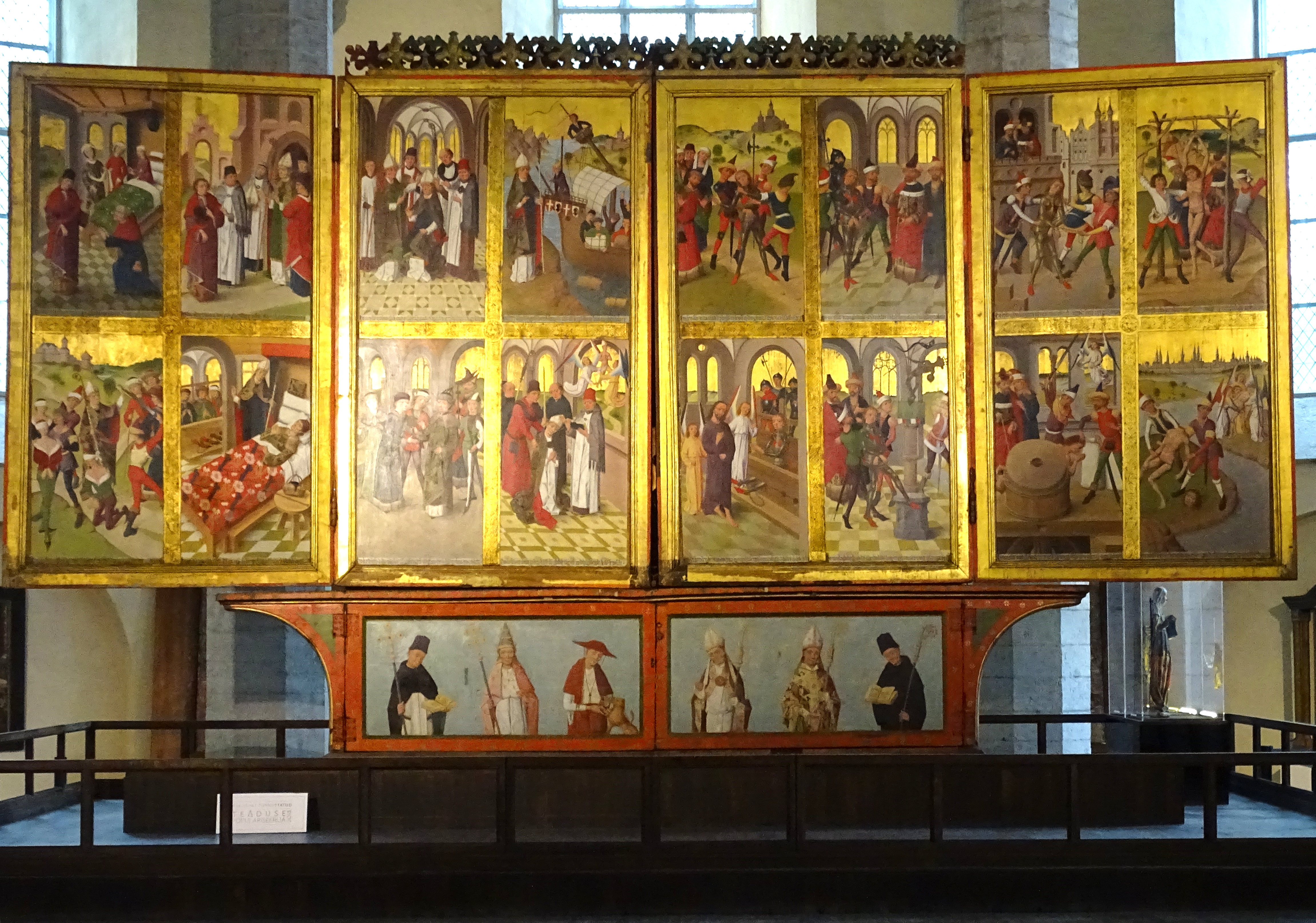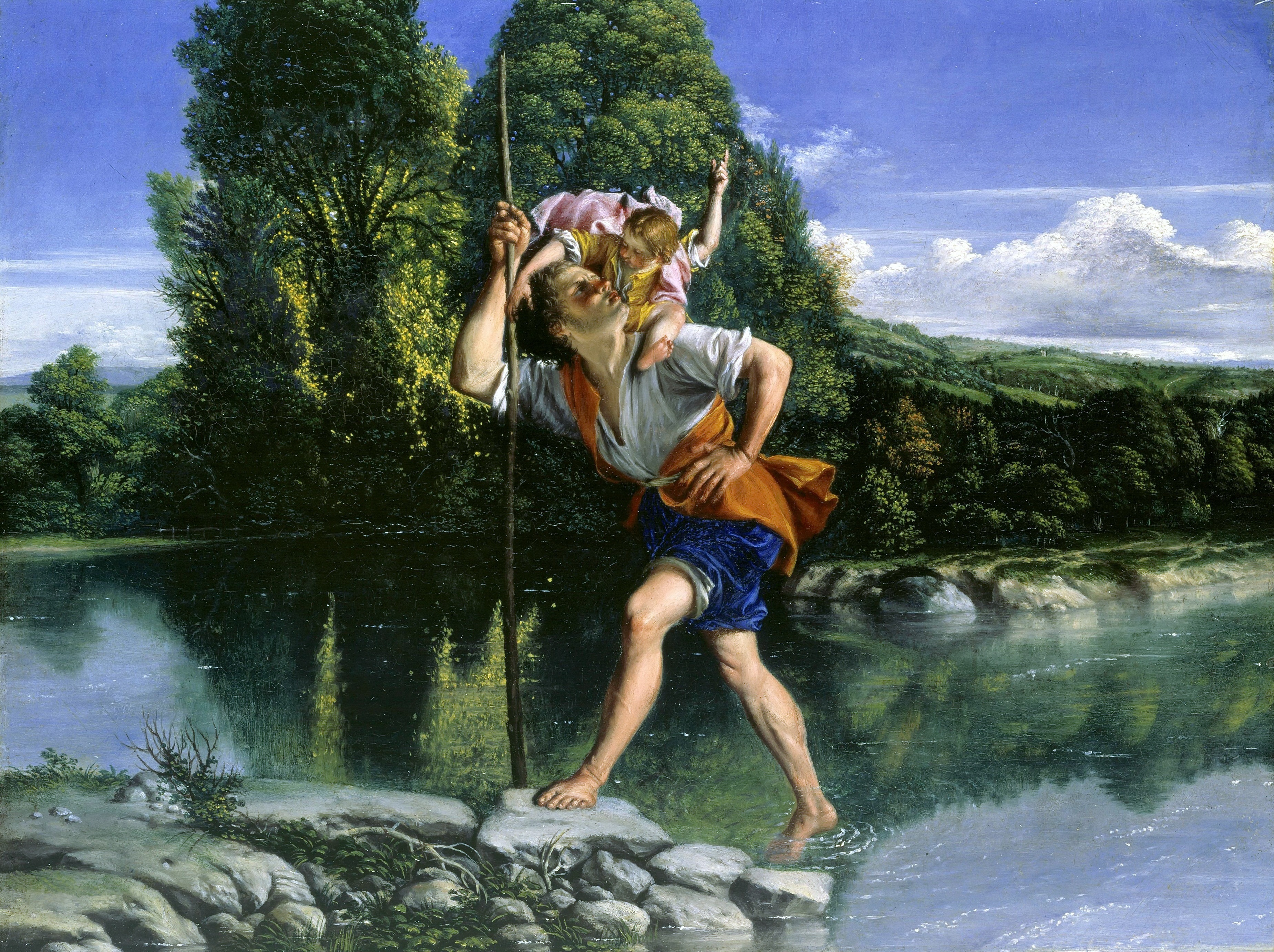|
St Sigismund's Church, Szydlowiec
Saint Sigismund's Church is a Roman Catholic parish church in Szydłowiec, Poland. It was built towards the close of the Gothic period (the church constitutive act is dated 1 January 1401) and is an example of the late-Gothic hall church. History By the Bishop's decree, which was issued on 1st January 1401 on the motion of Jakub Odrowąż and Sławko Odrowąż (later known under the nickname " Szydłowiecki"), the building of Saint Sigismund's Church started. The first church on the site was wooden. In 1493 Jakub Szydłowiecki commenced work to rebuild the church in stone. The building works lasted until 1525 and were completed by Jakub's brother . In the 17th century a church bell and tower were added. Architecture and features The exterior is of local sandstone. The church faces east and is composed of a three-bay chancel (presbytery) and a rectangular nave. On the northern side of the nave is the St. Stanislaus Chapel and the church vestibule; to the south is a Marian chap ... [...More Info...] [...Related Items...] OR: [Wikipedia] [Google] [Baidu] |
Saint Augustine
Augustine of Hippo ( , ; ; 13 November 354 – 28 August 430) was a theologian and philosopher of Berbers, Berber origin and the bishop of Hippo Regius in Numidia (Roman province), Numidia, Roman North Africa. His writings deeply influenced the development of Western philosophy and Western Christianity, and he is viewed as one of the most important Latin Church Fathers, Church Fathers of the Latin Church in the Patristic Period. His many important works include ''The City of God'', ''De Doctrina Christiana, On Christian Doctrine'', and ''Confessions (Augustine), Confessions''. According to his contemporary, Jerome, Jerome of Stridon, Augustine "established anew the ancient Faith". In his youth he was drawn to the Manichaeism, Manichaean faith, and later to the Hellenistic philosophy of Neoplatonism. After his conversion to Christianity and baptism in 386, Augustine developed his own approach to philosophy and theology, accommodating a variety of methods and perspectives. Believ ... [...More Info...] [...Related Items...] OR: [Wikipedia] [Google] [Baidu] |
Dorota Strzemboszowna
Dorota is a Polish, Czech and Slovak female given name, cognate with Dorothy. Notable people with the name include: *Dorota Andraka (born 1961), Polish-American educator * Dorota Dabrowska, Polish statistician * Dorota Gawron (born 1983), represented Poland in the Miss Universe pageant *Dorota Gruca (born 1970), Polish marathon runner *Dorota Barbara Jabłonowska (1760–1844), Polish noblewoman * Dorota Jakuta (born 1958), Polish politician *Dorota Jędrusińska (born 1982), Polish track and field sprint athlete * Dorota Kędzierzawska (born 1957), Polish director of feature and documentary films * Dorota Kwaśna (born 1972), Polish cross country skier *Dorota Masłowska (born 1983), Polish writer and journalist *Dorota Nieznalska (born 1973), controversial Polish artist *Dorota Rabczewska (born 1984), Polish singer *Dorota Siudek (born 1975), Polish retired pairs skater who is now a coach *Dorota Świeniewicz (born 1972), Polish volleyball player *Dorota Sitańska (born 1767), Poli ... [...More Info...] [...Related Items...] OR: [Wikipedia] [Google] [Baidu] |
Cemetery
A cemetery, burial ground, gravesite, graveyard, or a green space called a memorial park or memorial garden, is a place where the remains of many death, dead people are burial, buried or otherwise entombed. The word ''cemetery'' (from Greek language, Greek ) implies that the land is specifically designated as a burial ground and originally applied to the Ancient Rome, Roman catacombs. The term ''graveyard'' is often used interchangeably with cemetery, but a graveyard primarily refers to a burial ground within a churchyard. The intact or cremated remains of people may be interred in a grave, commonly referred to as burial, or in a tomb, an "above-ground grave" (resembling a sarcophagus), a mausoleum, a columbarium, a niche, or another edifice. In Western world, Western cultures, funeral ceremonies are often observed in cemeteries. These ceremonies or rites of passage differ according to culture, cultural practices and religion, religious beliefs. Modern cemeteries often inclu ... [...More Info...] [...Related Items...] OR: [Wikipedia] [Google] [Baidu] |
Saint Sigismund
Sigismund (; died 524 AD) was King of the Burgundians from 516 until his death. He was the son of king Gundobad and Caretene. He succeeded his father in 516. Sigismund and his brother Godomar were defeated in battle by Clovis's sons, and Godomar fled. Sigismund was captured by Chlodomer, King of Orléans, where he was kept as a prisoner. Later he, his wife and his children were executed. Godomar then rallied the Burgundian army and won back his kingdom. Life Sigismund was a student of Avitus of Vienne, the Chalcedonian bishop of Vienne who converted Sigismund from the Arian faith of his Burgundian forebears. Sigismund was inspired to found a monastery dedicated to Saint Maurice at Agaune in Valais in 515. The following year he became king of the Burgundians. Sigismund's conflict with Bishop Apollinaris Sigismund came into conflict with Apollinaris of Valence over the rules regarding marriage. The king's treasurer, Stephen, was living in flagrant incest. The four bishops of ... [...More Info...] [...Related Items...] OR: [Wikipedia] [Google] [Baidu] |
Kraków
, officially the Royal Capital City of Kraków, is the List of cities and towns in Poland, second-largest and one of the oldest cities in Poland. Situated on the Vistula River in Lesser Poland Voivodeship, the city has a population of 804,237 (2023), with approximately 8 million additional people living within a radius. Kraków was the official capital of Poland until 1596, and has traditionally been one of the leading centres of Polish academic, cultural, and artistic life. Cited as one of Europe's most beautiful cities, its Kraków Old Town, Old Town was declared a UNESCO World Heritage Site in 1978, one of the world's first sites granted the status. The city began as a Hamlet (place), hamlet on Wawel Hill and was a busy trading centre of Central Europe in 985. In 1038, it became the seat of King of Poland, Polish monarchs from the Piast dynasty, and subsequently served as the centre of administration under Jagiellonian dynasty, Jagiellonian kings and of the Polish–Lithuan ... [...More Info...] [...Related Items...] OR: [Wikipedia] [Google] [Baidu] |
Assumption Of Mary
The Assumption of Mary is one of the four Catholic Mariology#Dogmatic teachings, Marian dogmas of the Catholic Church. Pope Pius XII defined it on 1 November 1950 in his apostolic constitution as follows: It leaves open the question of whether Mary died or whether she was raised to Eternal life (Christianity), eternal life without bodily death. The equivalent belief in the Eastern Christianity is the Dormition of the Mother of God or the "Falling Asleep of the Mother of God". The word 'assumption' derives from the Latin word , meaning 'taking up'. Pope Pius XII expressed in his encyclical ''Munificentissimus Deus'' the hope that the belief in the bodily assumption of the virgin Mary into heaven "will make our belief in our own resurrection stronger and render it more effective", while the Catechism of the Catholic Church adds: "The Assumption of the Blessed Virgin is a singular participation in her Son's Resurrection and an anticipation of the resurrection of other Chri ... [...More Info...] [...Related Items...] OR: [Wikipedia] [Google] [Baidu] |
Polyptych
A polyptych ( ; Greek: ''poly-'' "many" and ''ptychē'' "fold") is a work of art (usually a panel painting) which is divided into sections, or panels. Some definitions restrict "polyptych" to works with more than three sections: a diptych is a two-part work of art; a triptych is a three-part work; a ''tetraptych'' or ''quadriptych'' has four parts. The great majority of historical examples are paintings with religious subjects, but in the 20th century the format became popular again for portraits and other subjects, in painting, photography, and other media. Historically, polyptychs were panel paintings that typically displayed one "central" or "main" panel that was usually the largest; the other panels are called "side" panels, or if hinged, "wings". Folding forms were much more common north of the Alps. Sometimes, as evident in the Ghent Altarpiece and Isenheim Altarpiece, the hinged panels can be varied in arrangement to show different "views" or "openings" in the piece, ... [...More Info...] [...Related Items...] OR: [Wikipedia] [Google] [Baidu] |
Gothic Art
Gothic art was a style of medieval art that developed in Northern France out of Romanesque art in the 12th century, led by the concurrent development of Gothic architecture. It spread to all of Western Europe, and much of Northern Europe, Northern, Southern Europe, Southern and Central Europe, never quite effacing more classical styles in Italy. In the late 14th century, the sophisticated court style of International Gothic developed, which continued to evolve until the late 15th century. In many areas, especially Germany, Late Gothic art continued well into the 16th century, before being subsumed into Renaissance art. Primary media in the Gothic period included sculpture, panel painting, stained glass, fresco and illuminated manuscripts. The easily recognisable shifts in architecture from Romanesque to Gothic, and Gothic to Renaissance styles, are typically used to define the periods in art in all media, although in many ways figurative art developed at a different pace. The ear ... [...More Info...] [...Related Items...] OR: [Wikipedia] [Google] [Baidu] |
Saint Florian
Florian (; AD 250 – 304) was a Christian holy man and the patron saint of chimney sweeps; soapmakers, and firefighters. His feast day is 4 May. Florian is also the patron saint of Poland, the city of Linz, Austria, and Upper Austria, jointly with Leopold III, Margrave of Austria. Life Florian was born around AD 250 in the ancient Roman city of Aelium Cetium, present-day Sankt Pölten, Austria. He joined the Roman Army and advanced in the ranks, rising to commander of the imperial army in the Roman province of Noricum. In addition to his military duties, he was also responsible for organizing and leading firefighting brigades. Florian organized and trained an elite group of soldiers whose sole duty was to fight fires. During the Diocletianic Persecution of Christians, reports reached Rome that Florian was not enforcing the proscriptions against Christians in his territory. Aquilinus was sent to investigate these reports. When Aquilinus ordered Florian to offer sacrifice t ... [...More Info...] [...Related Items...] OR: [Wikipedia] [Google] [Baidu] |
Saint Christopher
Saint Christopher (, , ; ) is venerated by several Christian denominations. According to these traditions, he was a martyr killed in the reign of the 3rd-century Roman Empire, Roman emperor Decius (), or alternatively under the emperor Maximinus Daia (). Churches and monasteries were named after him by the 7th century. There is no evidence for the historicity of the saint.Britannica, The Editors of Encyclopaedia. "Saint Christopher" Encyclopedia Britannica, 25 July 2024, https://www.britannica.com/biography/Saint-Christopher. Accessed 25 October 2024. The most famous legend connected to the saint recounts that after converting to Christianity, he devoted his life to carrying travelers across a river. One day he carried an unknown young boy across a river after which the boy reve ... [...More Info...] [...Related Items...] OR: [Wikipedia] [Google] [Baidu] |
Stanislaus Of Szczepanów
Stanislaus of Szczepanów (; 26 July 1030 – 11 April 1079) was a Polish Catholic prelate who served as Bishop of Kraków and was martyred by the Polish King Bolesław II the Bold. He is the patron saint of Poland. Stanislaus is venerated in the Catholic Church as Stanislaus the Martyr (as distinct from the 16th-century Jesuit, Stanislaus Kostka). Life According to hagiographic tradition, Stanislaus, or Stanisław in Polish, was born at Szczepanów, a village in Lesser Poland, the only son of the noble and pious Wielisław and Bogna. He was educated at a cathedral school in Gniezno (then the capital of Poland) and later, probably at Paris. On his return to Poland, Stanislaus was ordained a priest by Lambert II Suła, Bishop of Kraków. Following his ordination, he was given a canonry in Kraków and became known for his preaching. He was subsequently made pastor of Czembocz near Kraków, canon and preacher at the cathedral, and later, vicar-general. After the bishop' ... [...More Info...] [...Related Items...] OR: [Wikipedia] [Google] [Baidu] |






